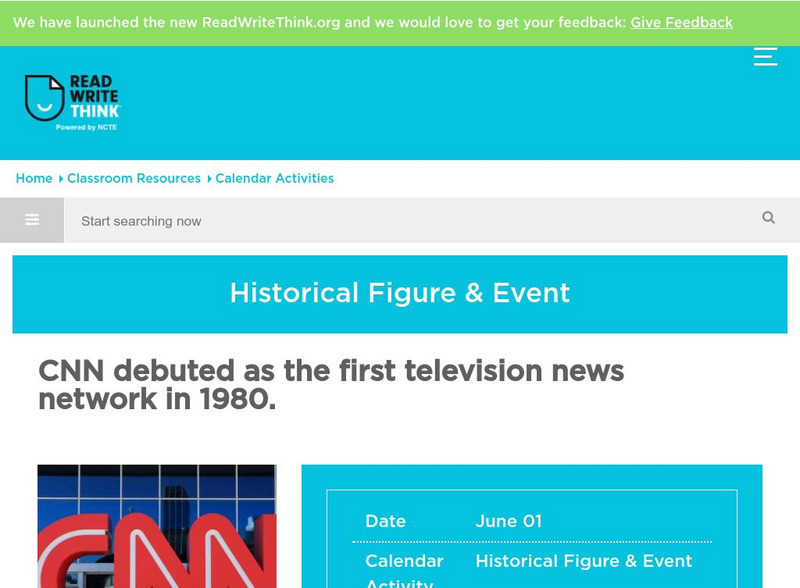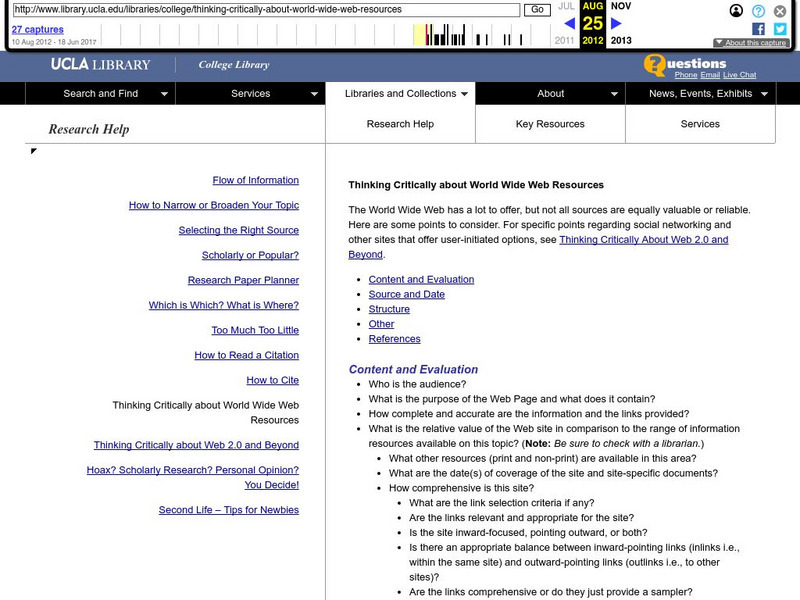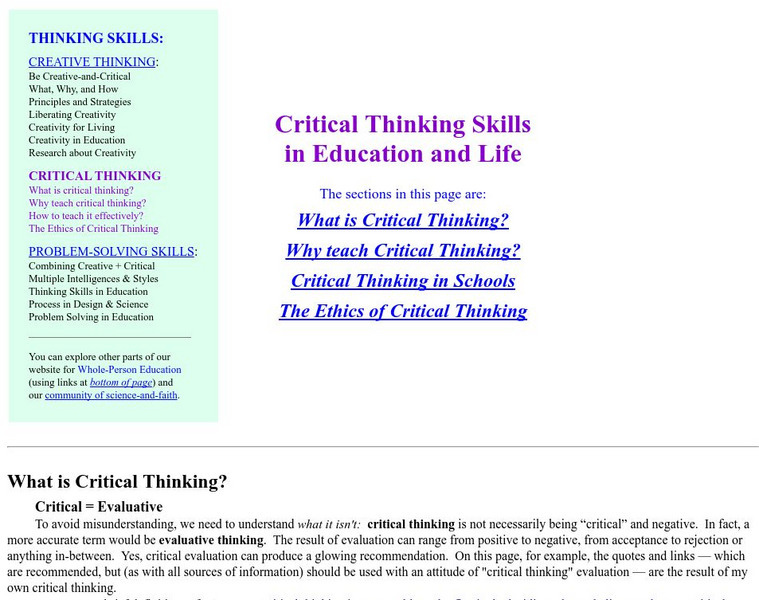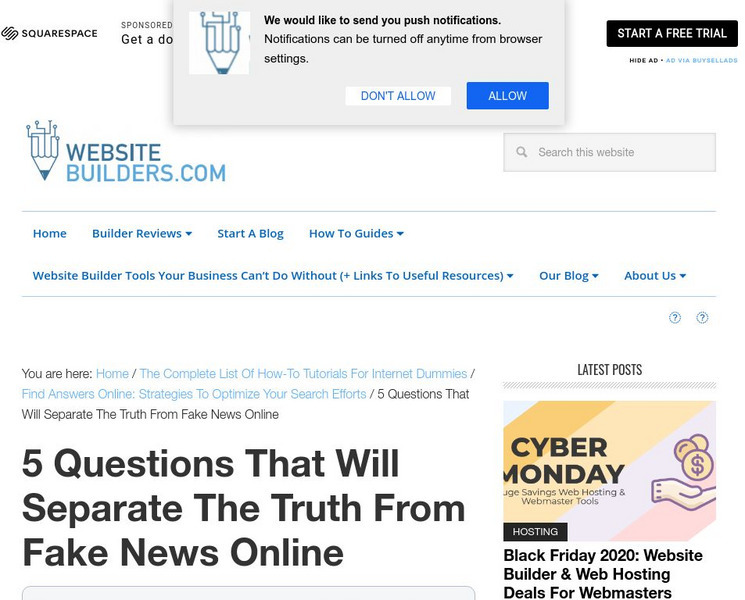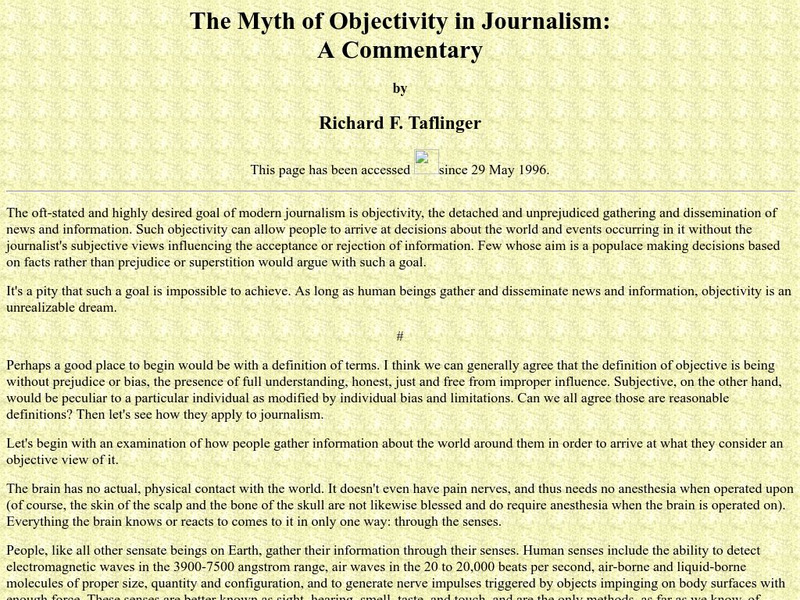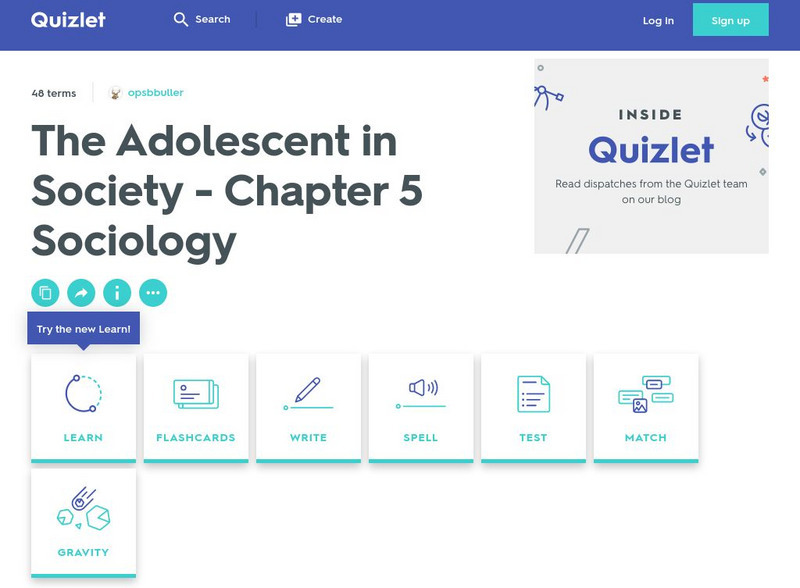Other
New York State Library: Student Activity: Primary Versus Secondary Sources
Read about the Railroad Strike of 1877 using three excerpts from textbooks and three original newspaper articles. Compare and contrast the information in the primary and secondary sources.
Cornell University
Cornell University: Library: Critically Analyzing Information Sources
A quick guide to help you determine the relevance and authority of a resource.
George Mason University
Gmu: Virginia Montecino: Criteria to Evaluate the Credibility of Www Resources
An easy-to-follow guide to assist in determining whether online resources are reliable and true. Find questions to ask while reviewing sources. CCSS.ELA-Literacy.CCRA.W.8 and CCSS.ELA-Literacy.CCRA.R.9
ReadWriteThink
Read Write Think: Cnn Debuted as the First Television News Network in 1980
These lesson plans relate to the gathering and production of news and creating a visual timeline. There are links to other lesson plan ideas, as well as web links, and a brief bibliography. SL.11-12.2 Eval&Integrate sources
Education Development Center
Tv411: Reading: Parts of a Newspaper
A series of three activities help readers become familiar with parts of a newspaper, from sections to headlines and captions.
ReadWriteThink
Read Write Think: Compare/contrast Electronic Text With Traditionally Printed Text
Lesson allows for middle school students who are familiar with researching electronic sources to gain a deeper understanding of the benefits of online resources versus traditional print.
PBS
Wnet: Thirteen: Classroom Interactives: Supreme Court Landmark Case Timeline
Educational interactive activity where users create a timeline of landmark Supreme Court cases. Provides information, facts, and related resources for each case.
University of Houston
University of Houston: Scholarly Journals Distributed via the World Wide Web
View an index of free online articles and journals which can be accessed without user registration at a website.
University of California
Ucla College Library: Thinking Critically About World Wide Web Resources
This site teaches readers how to evaluate the content and quality of web resources, offering questions and checklists to consider.
Council for Economic Education
Econ Ed Link: Believe It or Not?
This instructional activity reveals to students how advertisers use words and images to make goods and services look their best. To protect consumers and make sure that competition among sellers is fair in the marketplace, the federal...
Other
Asa Education: Critical Thinking Skills in Education and Life
There are many links and resources on this site dealing with critical thinking. It includes everything from the characteristics of critical thinkers to the logic of critical thinking.
Other
Learn the net.com: Evaluating Online Information: Fact or Fiction
How can you determine if online information is fact or fiction? Use this online article to become more computer literate in this topic. Includes a video.
Other
Fair: Retractions of Reporting Are Quite Selective
Interesting essay on the use of unnamed or anonymous sources, accuracy of reports, and retractions of innaccurate reports by major news outlets. Eye opener.
Washington State University
Washington State University: The Myth of Objectivity in Journalism, a Commentary
Scholarly discussion of objectivity and subjectivity as it exists, according to the author, in the world of journalism. Promotes critical thinking about how the news is gathered, written, and disseminated.
Thomson Reuters
Find Law: Supreme Court Decisions
This site serves as an index to Supreme Court cases that have been decided during the current court term. The links to each case provide the information pertaining to that individual case.
Other
Ire: Investigative Reporters and Editors
This non-profit group was created in 1975 as a networking tool for the exchange of ideas and attitudes concerning the quality of investigative reporting for the media. Site is newsletter-style with up-to-date information.
Online Writing Lab at Purdue University
Purdue University Owl: Common Pitfalls of Primary Research
Learn about the common mistakes made when reporting primary research findings.
Quizlet
Quizlet: The Adolescent in Society Chapter 5 Sociology
Practice the concepts of adolescent development by reading flash cards, playing race games, taking practice assessments, and more.
Curated OER
Mc Graw Hill: Integration of Knowledge and Ideas: Think Critically
Learn how to think critically by distinguishing between facts, opinions, and reasoned judgments. Practice exercise included.
Texas Education Agency
Texas Gateway: Synthesize Ideas in Informational/expository Text
[Accessible by TX Educators. Free Registration/Login Required] In this lesson, you will expand on your ability to read texts, synthesize them, and make choices based on the information you read. Finally, you will learn how to use textual...
University of Illinois
University of Illinois Extension: Is It What I Think or What I Know? (Fact or Opinion)
This short lesson provides a fairly simple way to teach young students the difference between fact and opinion.
Other
Dover Adult Learning Center: Pick Your Candidate [Pdf]
This document from the Dover Adult Learning Center is a nice resource for any beginners in the political decision-making process. Provides links to material to help decipher ads, candidate speeches, rhetorical tricks, campaign issues,...
TED Talks
Ted: Ted Ed: How to Choose Your News
Damon Brown gives the inside scoop on how the opinions and facts (and sometimes non-facts) make their way into the news and how the smart reader can tell them apart. [4:48]




